Industry Application
Product Type
How to Configure Battery Storage for House?
Home solar storage battery type selection
With the development of battery technology and the rapid decline in cost, lithium batteries have now become the mainstream choice for residential energy storage projects because of their high efficiency, long cycle life, accurate battery data and high consistency.
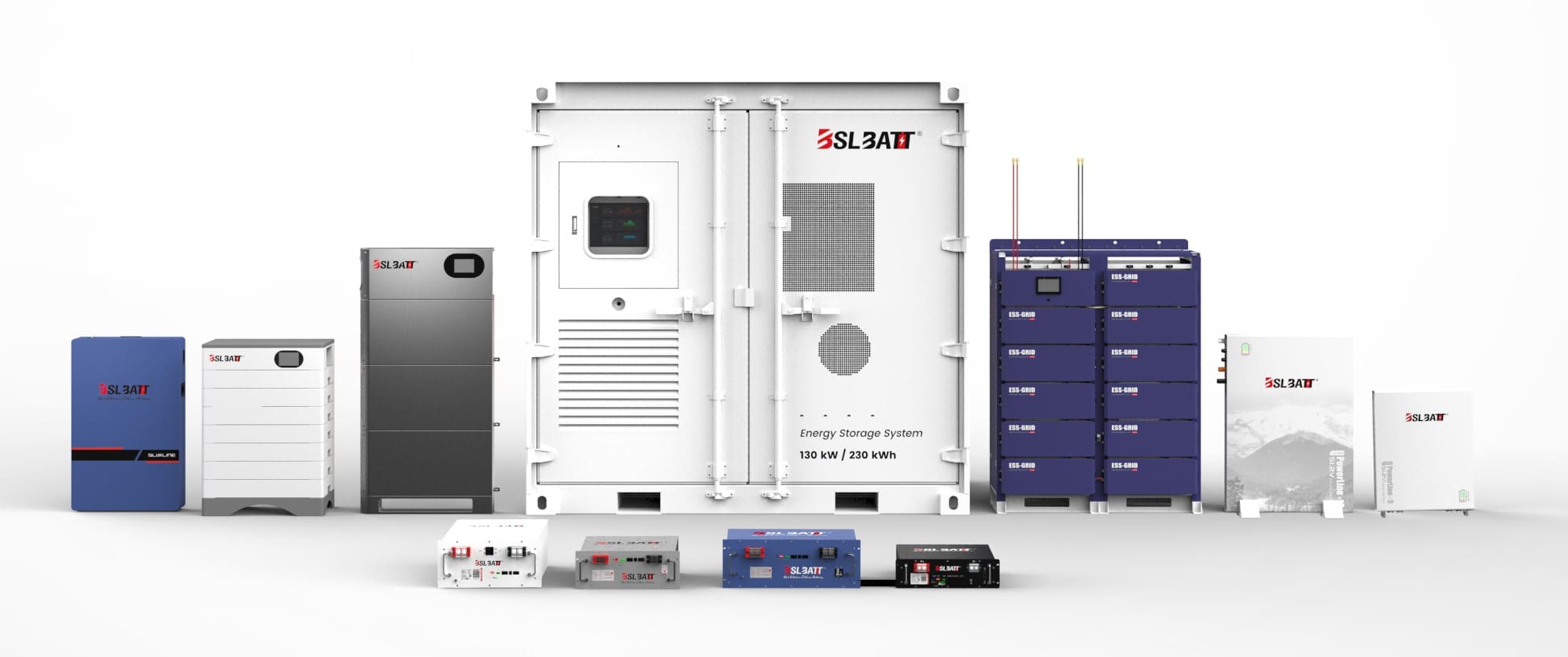
House battery storage capacity selection in the four common misunderstanding
Myth 1: House battery storage capacity is only based on load power and electricity consumption
In house battery storage capacity design, load condition is indeed the most important reference factor. However, the charging and discharging capacity of lithium battery, the maximum power of the storage machine and the power consumption period of the load should not be neglected, so we can’t only consider the load power and power consumption to choose House battery storage capacity, but need to consider them comprehensively.
Myth 2: Taking the theoretical capacity of lithium batteries as the actual capacity
Usually, the top-of-the house battery manual is labeled with the theoretical design capacity of the lithium battery, that is, in the ideal state, the battery from SOC100% to SOC0% when the battery can release the maximum amount of power. However, in the actual application, affected by temperature, service life and other factors, the actual capacity of lithium battery will be different from the design capacity. And in order to prolong the battery life in practical applications, generally do not allow discharge to SOC0%, which will be set to protect the power, which makes the actual available power even less, so in the selection of house battery storage capacity, need to exclude these factors, so as to ensure that there is sufficient battery capacity available for use.
Myth 3: house storage battery capacity selection the bigger the better
Many users will think that the larger the house storage battery capacity, the better, but in the design we also need to consider the battery utilization. If the capacity of the PV system is small, or the load power consumption is small, the demand for house storage battery capacity is not so big, which will also cause the waste of battery cost.
Myth 4: The house storage battery capacity is equal to the load power consumption.
Sometimes, out of the consideration of cost saving, the house storage battery capacity is almost equal to the load power consumption. However, due to process loss, the amount of house storage battery discharge will be less than the amount of battery storage, and the amount of power used by the load will also be less than the amount of battery discharge, ignoring the efficiency loss is likely to result in insufficient power supply phenomenon.
House battery storage capacity design for different application scenarios
The design of house battery storage capacity in three common application scenarios are mainly introduced: self-generation and self-consumption (with high or unsubsidized tariffs), peak and valley tariffs, and standby power (with unstable grid or important loads).
a. Self-generation and self-consumption
Due to higher electricity prices or lower subsidies for grid-connected PV (no subsidies), a house battery system is installed to reduce electricity expenses. Assuming grid stability, off-grid operation is not considered, PV is only to reduce grid electricity consumption, and generally there is more light during the day. Ideally, the PV+ storage system would be able to fully cover household electricity consumption. But this situation is difficult to realize. So we consider the input cost and electricity consumption, we can choose to select the capacity of house battery storage according to the average daily electricity consumption (kWh) of the family (the default PV system has enough energy). The design logic is as follows:
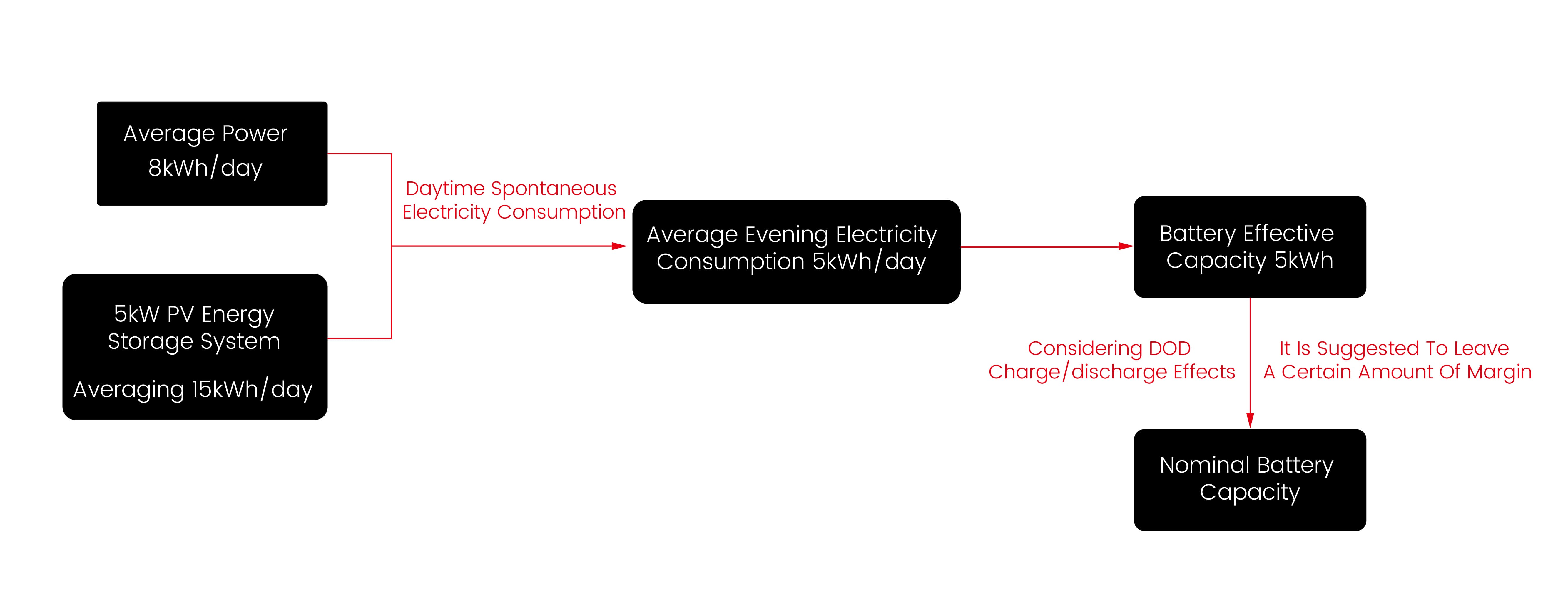
If power usage patterns can be accurately gathered and combined with storage machine management settings, system utilization can be maximized.
b. Peak and valley tariffs
Peak and valley tariff structure is roughly 17:00-22:00 for the peak period: daytime electricity consumption is small (PV system can be basically covered), in the peak period, it is necessary to ensure that at least more than half of the electricity supplied by the battery to reduce electricity costs. Assuming that the peak average daily electricity consumption: 20kWh its design ideas are as follows:
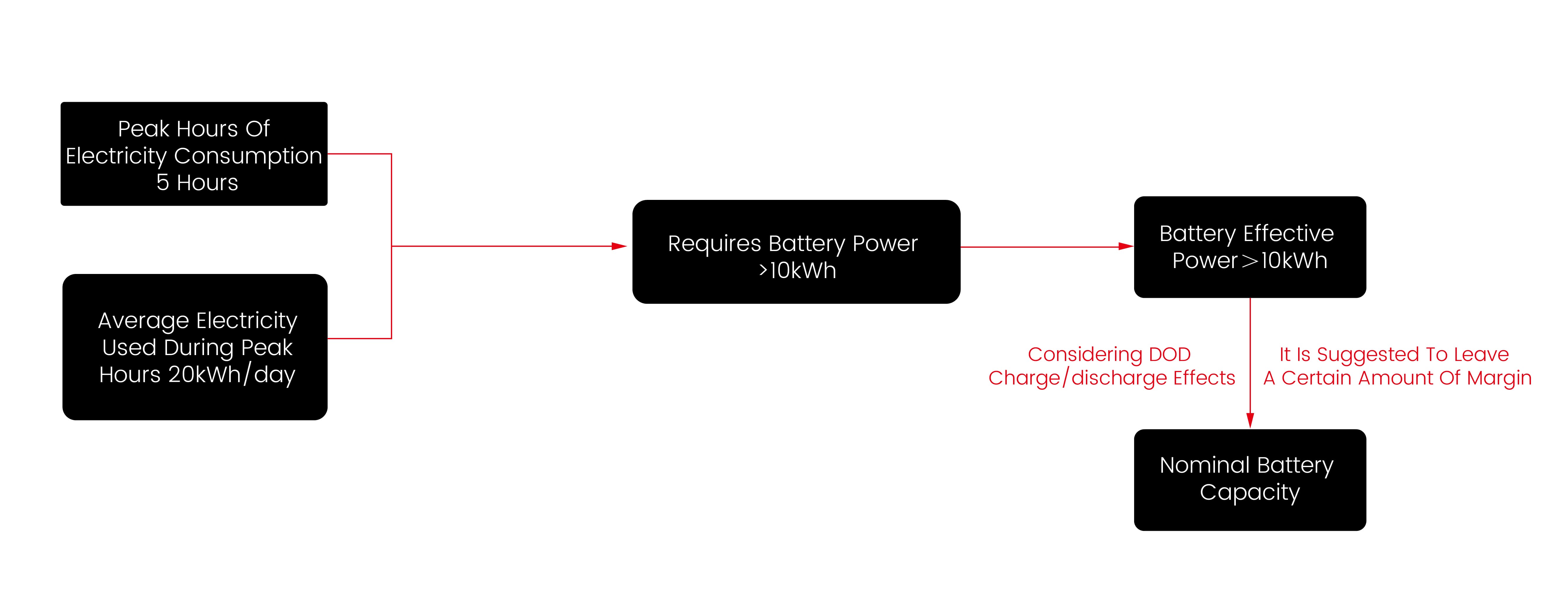
c. Grid instability area – Backup power supply
Mainly used in unstable areas of the power grid or important load situations. For example application site: probably can be installed 5-8KW components Important load: 4 * ventilation fan, the power of a single fan 550W Grid situation: grid instability, irregular power outages, the longest blackout length of 3 ~ 4 hours Application requirements: under normal grid conditions, the house storage battery priority charging; grid blackout, house storage battery + PV to ensure the normal operation of the important load (fan). battery + PV to ensure normal operation of important loads (fans). When choosing the capacity of a house storage battery, what needs to be considered is the amount of power needed to supply the battery alone in the off-grid situation (assuming an evening blackout and no PV). The total power used when off-grid and the expected time off-grid are the most critical parameters. Taking the maximum time of 4 hours expected from the power outage, its design can be referred to:
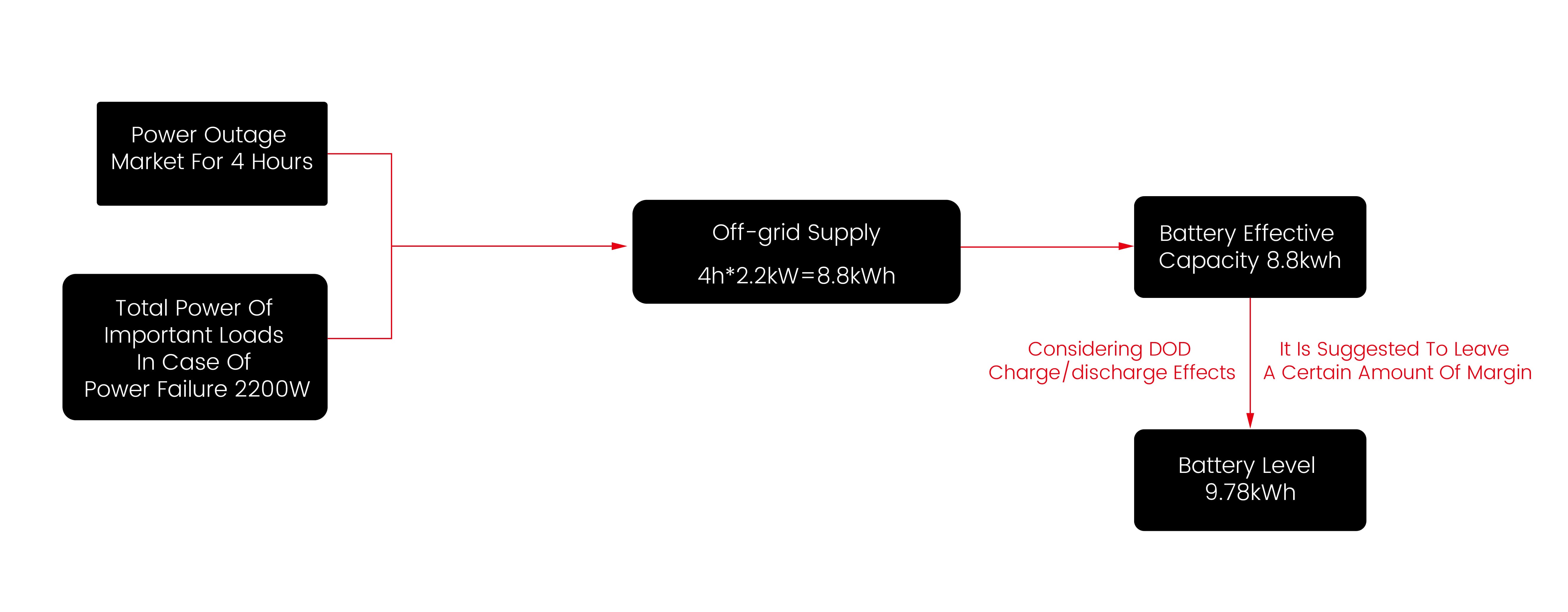
Two Important Factors in the Design of House battery storage Capacity
PV system capacity
Assuming that the house battery is fully charged by a photovoltaic system, the maximum power of the storage inverter is 5000W, and the sunshine hours per day is 4h, then: under the mode of house battery as a backup power source, it takes an average time for a battery with an effective capacity of 800Ah to be fully charged in an ideal state: 800Ah/100A/4h=2 days.
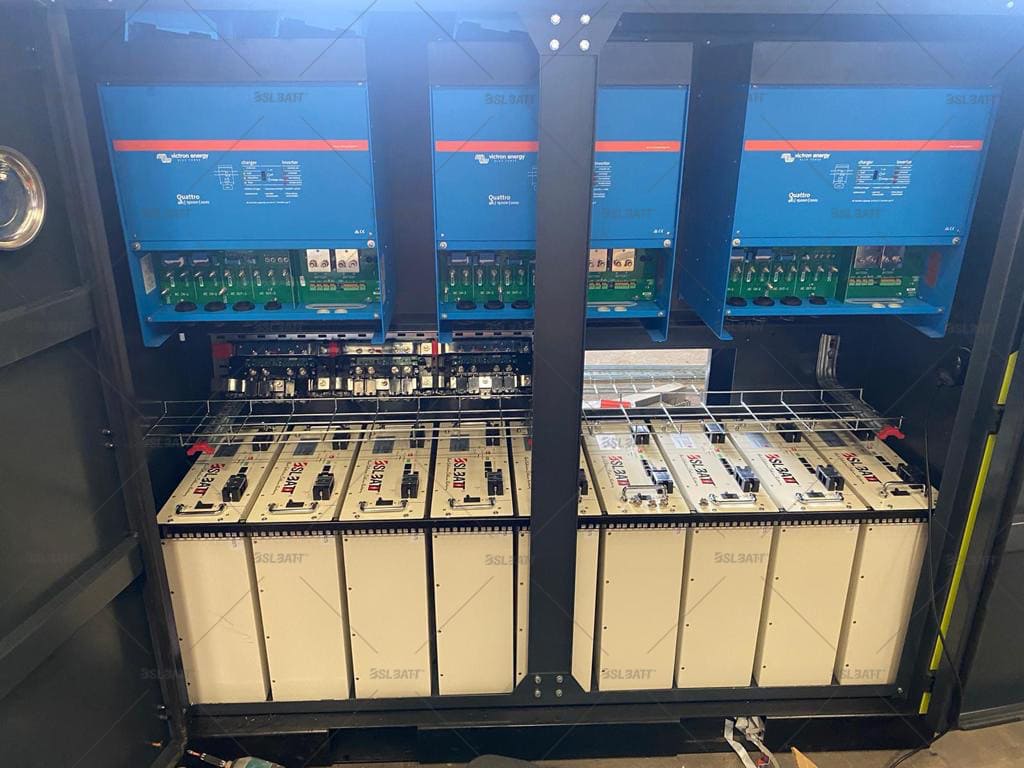
Battery redundancy design
Due to the existence of photovoltaic power generation instability, line loss, ineffective discharge, battery aging and other efficiency losses, in the design of battery capacity, the need to retain a certain margin.
The design of the battery margin is relatively free, and can be based on the actual situation of their own system design comprehensive judgment.
A Guide to Choosing the Best 48V Lithium Golf Cart Battery
Would it be worth investing in a 48V ...
10 Exciting Ways To Use Your 12V Lithium Batteries
Back in 2016 when BSLBATT first began designing what would become the first drop-in replacemen...
BSLBATT Battery Company Receives Bulk Orders from North American Customers
BSLBATT®, a China Forklift battery manufacturer specializing in the material handling indust...
Fun Find Friday: BSLBATT Battery is coming to another great LogiMAT 2022
MEET US! VETTER’S EXHIBITION YEAR 2022! LogiMAT in Stuttgart: SMART – SUSTAINABLE – SAF...
Looking for new Distributors and Dealers for BSL Lithium Batteries
BSLBATT battery is a fast-paced, high-growth (200% YoY ) hi-tech company that is leading the a...
BSLBATT to Participate at MODEX 2022 on March 28-31 in Atlanta, GA
BSLBATT is one of the largest developers, manufacturers, and integrators of lithium-ion batter...
What makes the BSLBATT the Superior Lithium Battery for your Motive Power needs?
Electric forklift and Floor Cleaning Machines owners who seek the ultimate performance will fi...





























